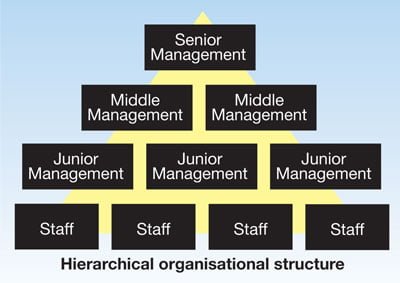
Founded just 15 years ago, Capco is a leading international provider of consulting, managed services and technology solutions for the financial services industry. With 20 offices around the world Capco employs over 2,000 people. In 2013 Capco ranked 27th in The Sunday Times 100 Best Companies to Work For list and is also featured as one of The Times Top 50 Employers for Women.
One of Capco’s key differentiators is that it is solely dedicated to the global financial services sector. The financial services sector includes banking, finance and investment. This sector faces many challenges, the main ones being:
- Increased customer expectation and demand
- New entrants to the market
- A need for innovation
- Significant regulation following the recent global financial crisis.
Company values
For Capco, its employees must be creative and think differently to provide tailored solutions in order to meet the needs of their clients facing these challenges.
‘We understand the business drivers of global financial services. Working shoulder to shoulder with our clients, we address and then look beyond immediate issues of compliance and competition. We help foster an entrepreneurial, innovative and growth-focused approach.’

Strong values of respect, integrity, commitment, excellence and knowledge define how the company works with its clients and reflect the behaviours Capco expects from its employees. It has a very large client base working with 75% of the world’s global financial services institutions. Its success is demonstrated by the fact that globally, it has grown 14.7% faster than its fastest growing competitor. Capco’s Associate Talent Programme (ATP) helps to ensure a pipeline of talent to meet this growth.
This case study shows how the organisational structure at Capco helped develop an innovative and entrepreneurial culture to facilitate its success.
Organisational structures and cultures

Organisations are established to meet a need, for example to provide goods or services. Organisational structures can take many forms. These are influenced by factors such as its purpose, size, the complexity of the tasks it performs, the external environment and its culture. Its products, services or where it is located also determine which structure is best. The structure chosen will govern the way in which the organisation operates and can have positive and negative effects. Traditional bureaucratic organisations such as the NHS have a hierarchical structure. This has many layers and a long chain of command from the top to the bottom layer. In the twentieth century, as organisations grew, hierarchical organisations were popular. This type of tall structure ensured effective command of the organisation because of the narrow span of control. (This is the number of people who report to a manager or supervisor).
In contrast to a hierarchical structure is a flat organisational structure. This structure has fewer layers or sometimes just one layer of management. This means that the chain of command from top to bottom of the organisation is short and the span of control is wide. With fewer layers for information to be cascaded down communication channels are clear and effective. Another alternative is a matrix structure. This type of structure is commonly used for project based work within an organisation. The team is made up of individuals with specialist skills, such as marketing, HR, or sometimes specialist technical skills, who work together on a specific project.

A tall hierarchical structure would not fit with Capco’s innovative and entrepreneurial culture. It has a non-hierarchical, team-driven flat structure. Within Capco’s flat organisational structure operate matrix structures for specific projects that require a variety of skills. Once the project has been completed these employees move on to another project with a different group of employees.
This structure creates a highly motivated and empowered workforce with everyone having access to advice and coaching. Its focus on innovation has created a ‘bottom up’ leadership approach where there is little bureaucracy. Employees are able to freely ask questions and suggest improvements. All have open access, for example, to the UK Chief Executive Officer who sits in the middle of the office.
‘We support and encourage an entrepreneurial outlook and independent thinking. Capco is not about organisational charts and layers — we operate with little hierarchy because we want all employees to feel that Capco is their firm to own and run.’
Organisational culture

Capco’s entrepreneurial and innovative culture supports its structure. Its culture celebrates individuality, integrity and openness in the work environment. Employees have the freedom to realise their aspirations. Built on four key pillars the Capco culture embraces:
- Personal growth opportunities
- Performance and reward
- A challenging portfolio of work
- Experience and learning.
Capco’s structure and culture fosters flexibility, creativity and an element of risk-taking. Teamed with a long-term vision, its employees are able to meet the changing and challenging needs of the financial services industry.
Working in teams

Team working in organisations is commonplace. Workplace teams can be formal in that people are brought together from different functions or departments to work on a specific project. There are also informal teams in the workplace, for example, a team working together to organise a social event. However, individuals can also be part of a formal or informal team outside of work. A football team is an example of a formal team. It has a team captain with the rest of the team having specific positions or roles with the purpose of scoring or preventing goals. Informal teams could be a group of friends who meet outside of school or college who share a common interest such as cycling. A team is more than a group of people who happen to work together. An effective team is one which:
- Shares a common purpose
- Respects and supports each other
- Has a high commitment to achieving targets
- Has a clear understanding of the work and the role of each team member
- Is good at generating and sharing ideas
- Has open communication between team members.
Team working is integral to the way Capco operates. Its teams are composed of a variety of people from different areas of the business. They work together, using their different strengths, skills and experience to deliver a project.
‘We are natural partners with our clients, colleagues, and our community, and we are at our best when working as a team.’

For example a large financial services organisation approached Capco with their vision to develop a mobile app, which they wanted to take to market. Rather than immediately accepting the original brief, the Capco team took the idea through its ‘innovation process’ as it knew that taking an idea to market without the appropriate planning and thought often leads to pitfalls longer-term. The Capco team, with the client, explored and challenged the original vision and objectives and generated additional ideas. By taking the client on this journey, Capco ensured that the right idea was progressed from the start. Innovative approaches such as this require excellent communication channels and by working as a team, communicating and exchanging different views they were able to develop additional ideas.
Communication channels

Open and effective communication is crucial for all organisations and is affected by the span of control. A narrow span of control in tall hierarchical organisations can lead to communication problems because of the large number of layers between the top and the bottom. These tall hierarchical structures can also be rigid and inflexible. This can stifle ideas, innovation and creativity. In contrast, a wider span of control encourages and involves employees. This helps to generate ideas and promote new ways of thinking.
Capco believes in open lines of communication and its structure and culture has created honest channels of communication. Its local and regional offices host regular forums to disseminate information about developments in the business, as well as giving employees an opportunity to socialise. These forums also provide opportunities for employees to put forward their entrepreneurial ideas to the leadership team. Consultants can often be based remotely on a client site and miss the day to day interactions of a team or connection with the firm. In order to keep in touch with other staff, despite working in different locations and on different projects, an internal social networking site was created called CapInTouch. This entrepreneurial idea:
‘Is now an internal community-based tool available to all Capco employees. The global social networking site has revolutionised the way people communicate across the organisation.’
Social media
Capco also uses social media to communicate externally. For example, LinkedIn is used to communicate the benefits of its Associate Talent Programme (ATP) to attract applicants. After joining the ATP, new associates undertake an intensive training course, involving working in a simulated project environment. Effective communication is at the heart of Capco’s training programme. The course offers an introduction to the global financial services landscape, current risks and regulations, and the foundations of consulting and project delivery.

Open and honest communication and a commitment to training and development at Capco creates positive employee relations. In a recent survey, 85% of Capco’s employees stated that they are happy with their personal growth. This supports the company’s commitment to help all its employees continually broaden their skills base and deepen their industry knowledge, at every stage of their career. Each employee is also assigned a career development coach who provides personal ongoing career guidance.
The skills and experience of its employees and the ability to think differently are an essential component of the added value that Capco offers to clients. Idea generation for its financial services clients is developed through Capco’s ‘rocket method’. This covers all aspects of team working, communication and team decision making.
Team decision making
Making effective decisions as a team is dependent on a number of factors, for example:
- The differing skills and abilities of the team
- The size of the team
- The task that has to be completed.
Ideally teams are more effective when they have a mix of skill and ability. For example, a team needs a person who can generate ideas, another person who can analyse the ideas, another to monitor progress, another to co-ordinate and someone who makes sure the work is completed.
Smaller teams are able to make faster decisions. Large teams usually need a formal structure to co-ordinate roles and responsibilities. Consequently, communication is more complex and decision making slower. If a task is urgent then it is preferable for a small team or even an individual to undertake the task to ensure focus. Teams are, however, the most effective way of dealing with complex or challenging tasks, using the combined skills and creative abilities of the team members.
As a flat-structured organisation, Capco encourages employees at all levels of the company to share their ideas and contribute to finding innovative solutions to complex and challenging client problems. Capco uses ‘rocket teams’ to generate ideas. The teams are small with 3 to 4 people. This helps to quickly establish trust amongst the team.

Working creatively together the rocket team ensures that all ideas are considered and no ideas are blocked. ‘Futurology’ is used to think ahead into the future. In particular, it helps teams to understand where the industry is going, how the customer will have adapted to the future and to assess how this impacts on the vision and objectives. The ideas generated are shaped to ensure they meet the criteria of being novel, useful and commercially viable. The chosen idea is then ‘sketched’ to find out how it could work in reality. Once the idea has been communicated to the relevant stakeholders, Capco’s innovators and development teams work together to build prototypes and test the idea with customers. The final stage is taking the idea to market. This ‘innovation process’ gives Capco and its client the confidence that the idea is going to be worth a long term investment.

The structure of an organisation varies depending on a number of influencing factors. The structure is influenced by the external environment in which the business operates as well as its culture and the nature of the work and activities it undertakes. The structure can have both a positive and negative impact on a business. Having the right structure allows a business to respond and adapt to changes in the market quickly. Innovation and creativity are usually found in flatter organisational structures and in organisations with an entrepreneurial and employee-focused culture, such as Capco. Capco’s culture means its employees feel empowered and motivated. This in turn encourages them to positively contribute to generating relevant ideas and effective team working in this innovative working environment.



